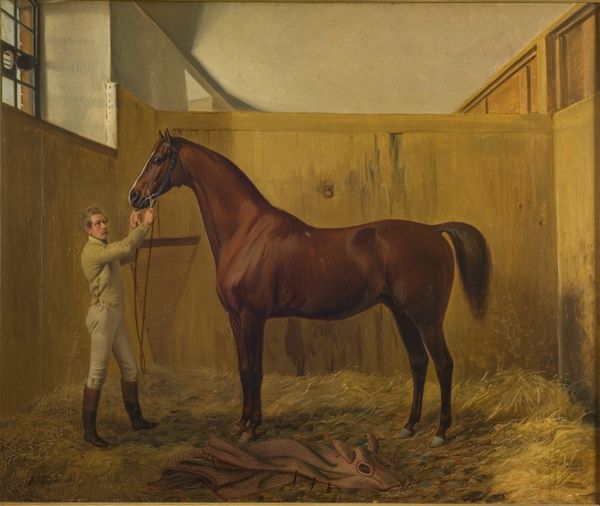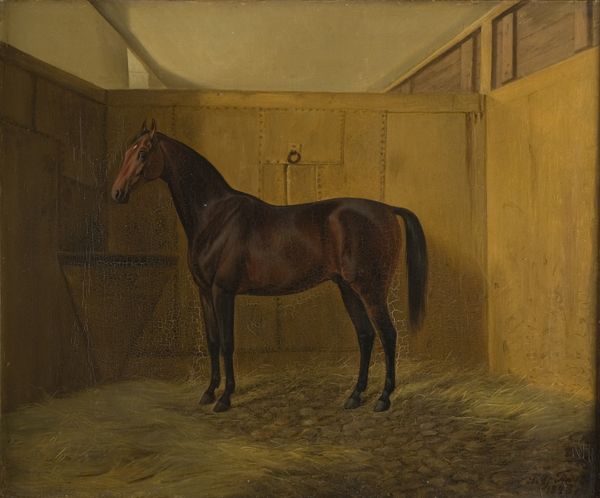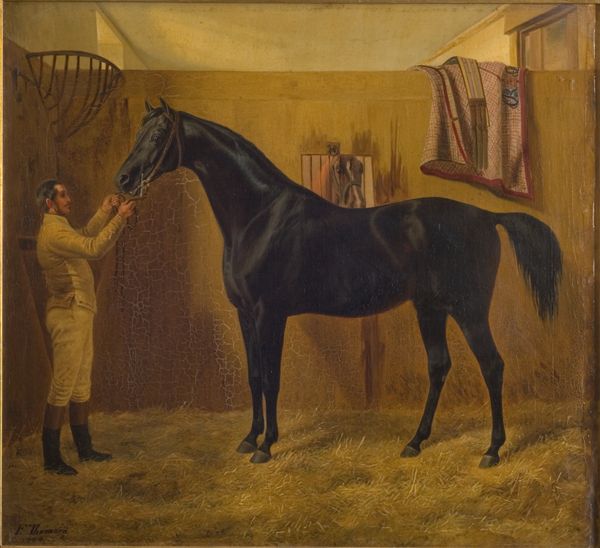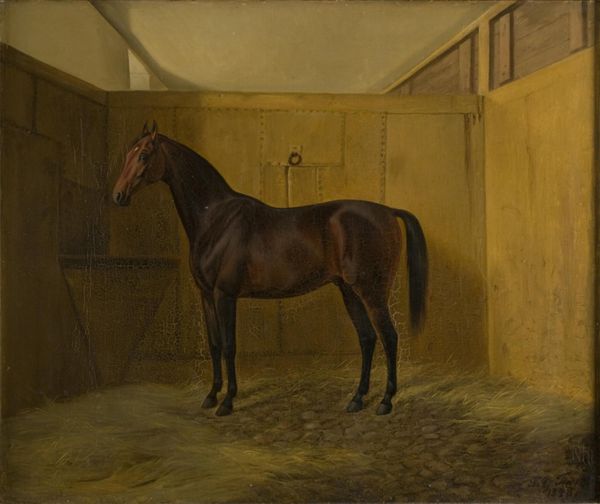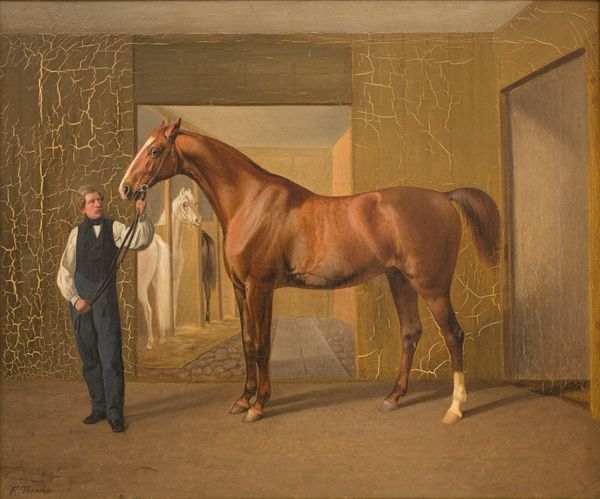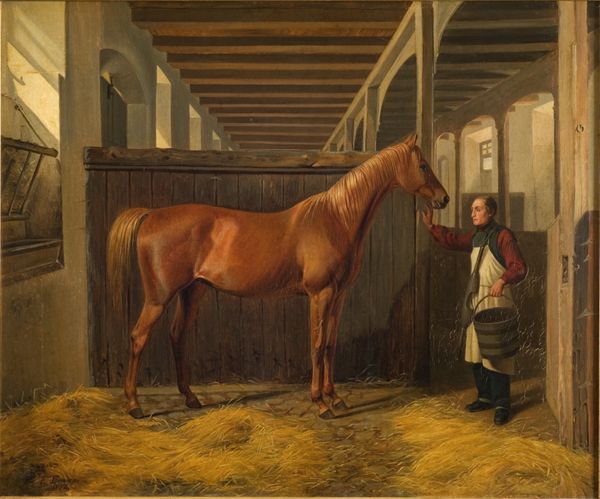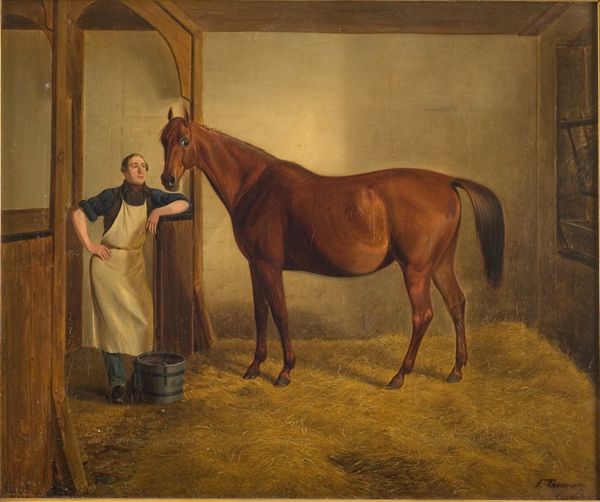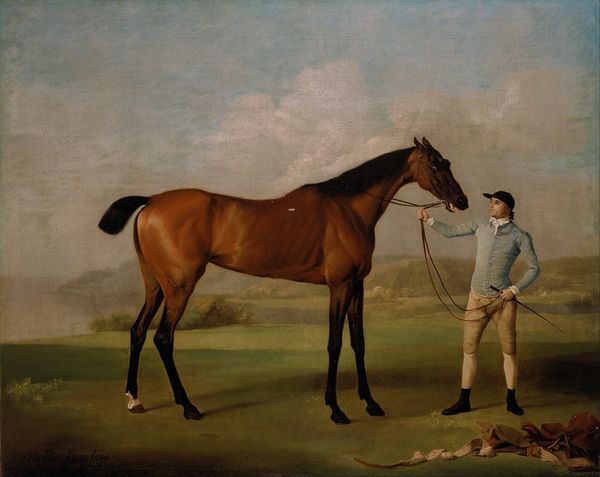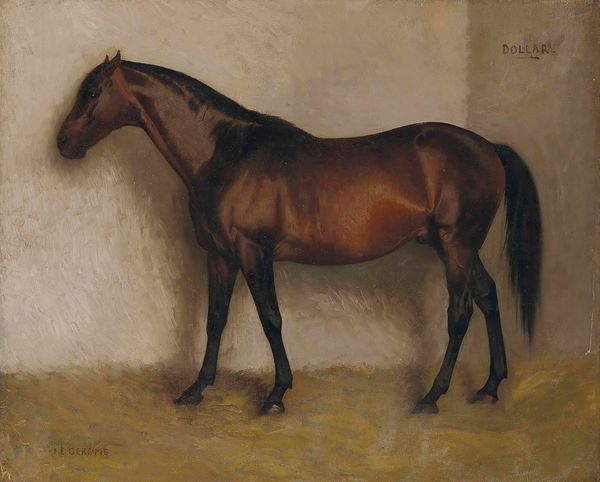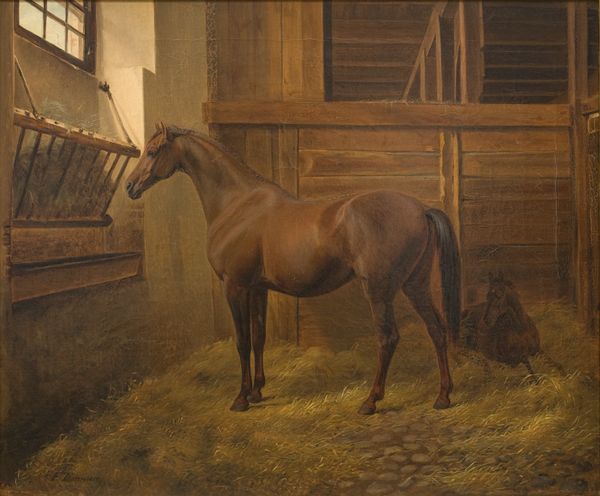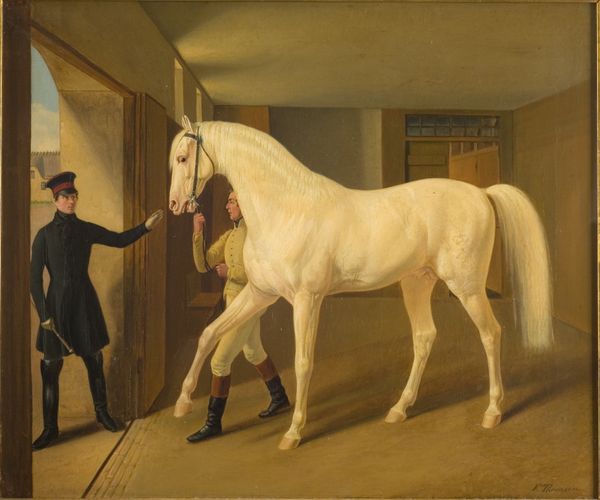
painting, oil-paint, canvas
#
portrait
#
painting
#
oil-paint
#
oil painting
#
canvas
#
underpainting
#
romanticism
#
genre-painting
#
watercolor
#
fine art portrait
#
realism
Dimensions: 45 cm (height) x 55 cm (width) (Netto)
Editor: This is "Zampa" painted by Fritz Thomsen sometime in the 1840s, rendered in oil on canvas. I’m immediately drawn to the stillness of the scene and the contrast between the groom and the dark horse. How do you interpret this work within its historical context? Curator: I see it as a potent illustration of the complex social dynamics inherent in the ownership and display of wealth and power. While seemingly a simple stable scene, the painting speaks volumes about human-animal relations and class structure in 19th-century Denmark. What do you make of the positioning of the groom in relation to the horse? Editor: It seems subservient. He's averted gaze, lower stature…almost invisible compared to the horse. Was this a common representation? Curator: Absolutely. Consider how land ownership and animal husbandry were markers of status. The meticulous rendering of the horse—its musculature, sheen—signals its value, reflecting on the owner's prestige. Thomsen’s work reveals the silent labor upon which such displays of power are built. Who benefits in the narrative being conveyed by this artwork? Editor: The owner, definitely. The painting glorifies ownership and reinforces a social hierarchy where the groom is merely a tool in maintaining that status. Curator: Precisely! And where does that leave the animal itself? We often overlook the exploitation inherent in such displays of "fine breeding". "Zampa" asks us to confront these questions of labor, status, and exploitation that are still relevant today. Editor: This has given me a completely new perspective on what I initially perceived as a simple portrait. It highlights how even seemingly benign images can carry powerful messages about social hierarchies and the often-unseen labor that supports them. Curator: And how critical it is for us to confront this even now. Examining "Zampa" teaches us how closely linked humans are in historical narratives, but at what cost.
Comments
No comments
Be the first to comment and join the conversation on the ultimate creative platform.
